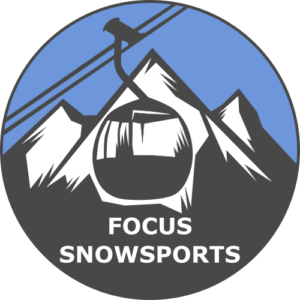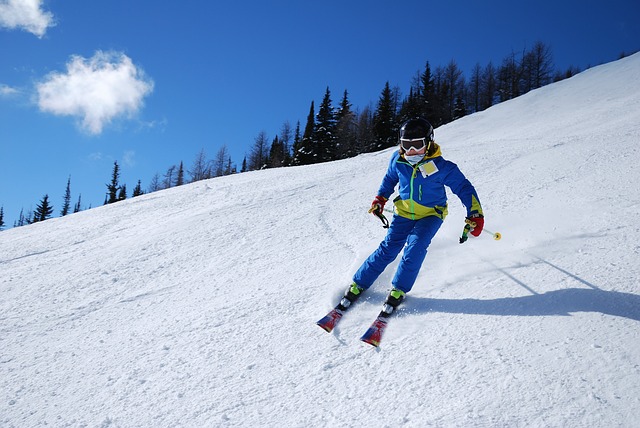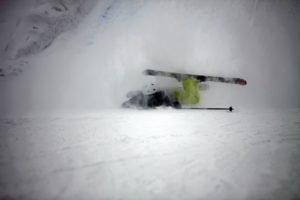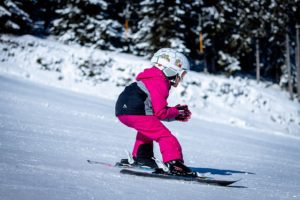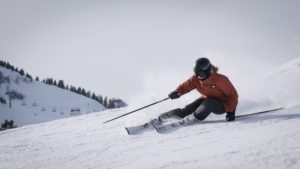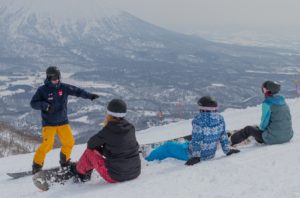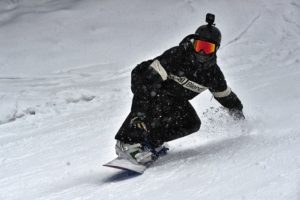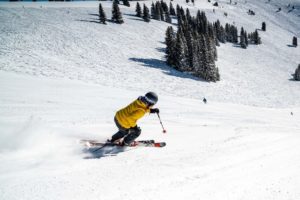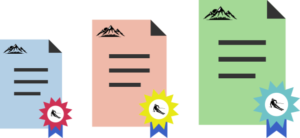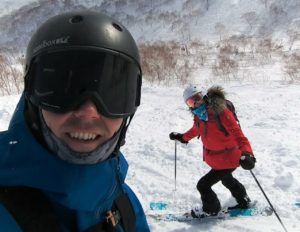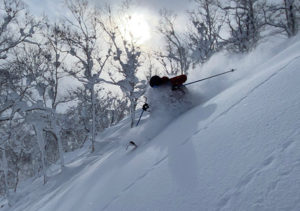For kids ski lessons, some will gain new ability levels faster, while others may need more time. New instructors may find kids lessons challenging when different abilities emerge during the lesson.
Kids group ski lessons are organised into different ability levels by each ski school. Within each ability level there’s room for some kids to closer to the top of that ability level than others. If they’re ready for the next ski level, they could move up a class, but often some kids aren’t ready for that step yet. In the real world, each level must allow for a range of abilities within it and you’ll need to effectively manage this as a ski instructor.
You’ll need to learn some tactics to deal with these splits so that everyone in your lesson has a great time and learns something. Here are some tips to consider when you have a group of mixed ability levels.
Skiing Myths For New Instructors
Focus on the Lowest Ski Ability Level
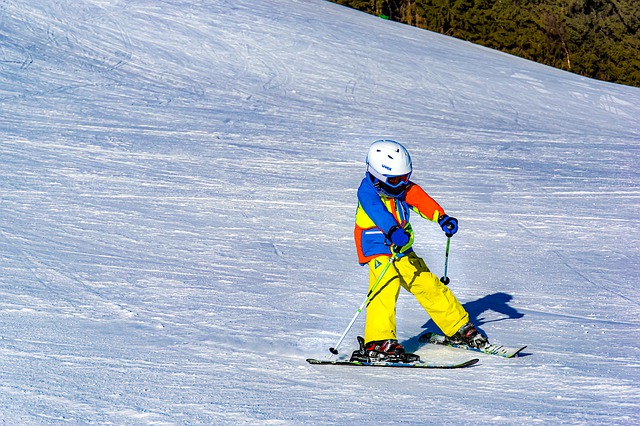
This is the single most important element when dealing with kids lesson ability splits. You lesson should primarily focus on the lowest ski ability level in your kids group. This is not to say you should ignore the more advanced kids, we’ll focus on how to help them next. But, you should ensure that the exercises, explanations, pace and skiing speed are all achievable to the lowest ability in your kids group. Let’s look at why.
Firstly, you’ll be running a safe ski lesson. You’ll know that each of your kids are comfortable and able to try the things that you’re teaching. It’s not a pleasant experience for anyone to feel like they can’t keep up, or that they’re struggling. This is especially true for children, it can be easy for them to lose the love of skiing if they feel overwhelmed, tired or even scared.
By designing your lesson plan around the lowest ski ability within your kids group, you’ve got a much higher chance of these children improving and even catching up to the stronger kids.
Keep the Stronger Kids Engaged
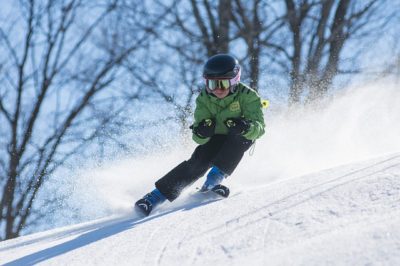
So you’re now providing a safe and fun ski lesson for your kids group, which is great. But what if the stronger kids are starting to get bored or disengaged from the lesson? This can be avoided by adapting your lesson and aiming to be a more flexible ski instructor.
The kids of higher ability within your group will want to be challenged, they want to ski to the level that they are. You can challenge them with multiple tactics and this is where you’ll develop your individual style as a ski instructor. A few examples of how to keep your stronger kids engaged are:
- Have them try a more challenging version of an exercise. Some examples:
- Learning to stop: Try to stop between poles/ next to a marker, try faster speeds and still stopping at the marker
- Working on turns: Try lifting/tapping the uphill ski when traversing across the hill
- Working on parallel: Add small jump during a traverse
- Pair up skiers of similar ability levels:
- Airplanes/Superheroes/Cops and Robbers etc chasing each other (swap leader and follower each run)
- Traffic Lights; One calls out red light to stop, green light to go, both should try to follow the traffic light calls
- Setup ski courses with cones/markers/poles. You can make harder and easier versions by placing the markers in different ways
- Have kids try different types of turns shapes
- Use relevant games, themes, team activities and imagination to maintain engagement across all levels. This way the kids with a stronger ability level will already be having fun, even if they might not be going as fast as they’re able to
A Day in the Life of a Ski Instructor
Choose Ski Terrain Wisely
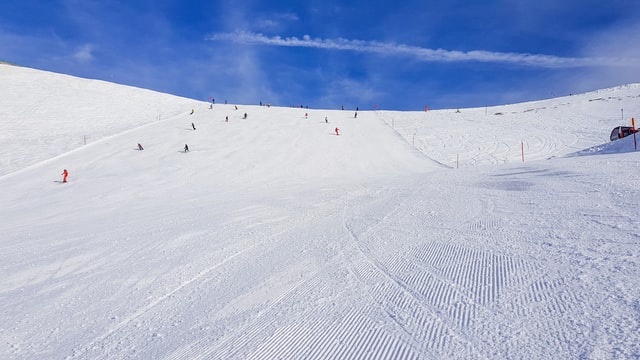
As a ski instructor, your terrain choice can be just as important as the rest of your lesson. When teaching kids lessons of mixed abilities, a great choice of the right steepness, width, and camber of the ski run can make your lesson much more successful.
Like your lesson content, ski slopes should be appropriate for the lowest ability level within your group. You can always make a ski run more challenging by the type of turns you make and the speed you choose, but it’s very difficult to make a ski run easier if a student isn’t at the level to ski it confidently.
There’s a phrase in ski schools, maximum speed, minimum terrain. This means that you can use flatter terrain to build up confidence and skills. If you have a mixed ability group, this can be a great tool for kids ski lessons. For example, you might have a kids group lesson where some are ready to try a blue slope, but others should really have more practice on greens. Increasing the speed on comfortable green terrain has two benefits. Your higher ability kids will stay engaged, and the lower ability kids become comfortable at higher speeds. This means more success when they do transition to the steeper blue slopes.
Explain Things Differently
Not only do we all learn at different speeds, we all learn in different ways. Sometimes the reason for a child being a slower skier, or appearing as a lower ability is simply their understanding. By paying careful attention to how kids process your information, you can adapt the wording and how you present information to get better results.
Try to find out what the child is interested in and structure your lesson content around that. Sometimes a simple change in wording can have a huge impact. Here’s an example:
You’re teaching a group of six kids to stop with their skis by making a triangle (wedge/snowplough). You explain to push their heels apart keeping the front of the skis close. Five of the six kids can make the triangle shape but one is pushing their toes apart (reverse wedge). You found out earlier that this child loves airplanes. So, you make an airplane shape, the point is the front, and the wide ski tails are the wings. The child is now able to understand which way the triangle should be.
That child was on the right track to make a wedge/snowplough with their skis, but they didn’t associate the right movements to make the right shape. To them, they may have fully thought that the backwards triangle was right. But once they associated it with an airplane, they could tell how it should look. If you can adapt how you present information, you can manage mixed ability kids ski lessons well.
Top 5 Qualities of a Great Ski Instructor
Be a Dynamic Kids Ski Instructor
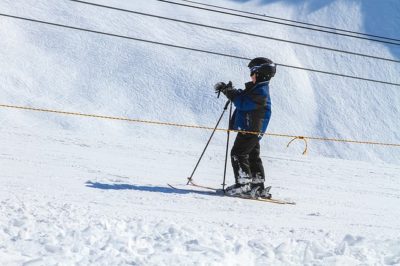
Lastly, how you run your ski lesson can have a very positive impact to mixed ability kids groups. If you’re a newly qualified instructor, you’ll quickly realise that training and real world lessons can be very different. Your training gave you a great framework for teaching effective ski lessons, but now it’s time to adapt and develop as a ski instructor.
Here are a few tips on how to run a dynamic kids group lesson:
- Run a coaching style session on the magic carpet: have kids lap while you help each one individually
- Split your lesson delivery: You don’t always need to address the whole class all at once. This can be more effective and keep the kids skiing more
- Use chairlift time with your lower ability kids to give them additional help, feedback and encouragement
- If you have one stronger child but you’re limited on terrain or speed options, consider giving them a “prestige” position. This can be “assistant instructor” or “ski patrol”; being on the lookout for if anyone falls and alerting you
- Sometimes a group’s speed is more important than exactly how they are skiing. If everyone can comfortably ski the same slope together then don’t worry if some are more parallel than others
- Discover each child’s goals. Some kids just want to ski fast with no control and may be unrealistic to what will happen on your lesson. If you know what each child wants from skiing, you can guide them into having achievable goals
- Try to find the deeper causes of ability level splits. Does the child lack the ability yet to perform the exercise, or is there a psychological reason? Nervous, confused on what to do, stressed, scared?
How to Stand Out as a Snowsports Instructor
Teaching kids ski lessons in the real world involves a lot of skills to ensure that everyone has a great time. Learning the tactics and methods to deal with kids ski ability splits will help you provide the best lessons possible. It will also allow you to enjoy teaching children to the fullest, knowing that you’re providing a safe, fun and engaging lesson for all kids involved.
